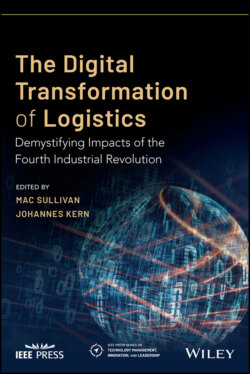Читать книгу The Digital Transformation of Logistics - Группа авторов - Страница 76
Key Takeaways
ОглавлениеAdditive manufacturing (also called 3D printing or rapid prototyping), where a product is built by adding instead of subtracting material, is one of the key elements of the Fourth Industrial Revolution.
The additive manufacturing supply chain is much more concise, shorter, and localized compared with a conventional supply chain.
AM allows for decentralized production close to the place of consumption, thus drastically altering supplier relationships, transportation patterns, inventory policies, or packaging processes.
The technology has advantages in terms of costs, flexibility, sustainability, and innovation and enables an economic production of small batches – also with customized designs and complex structures.
Product‐, processing‐, and regulation‐related bottlenecks are currently existing and preventing a breakthrough of the technology and consequently a disruption of supply chains.
Currently the AM technologies – stereolithography, fused deposition modeling, and selective laser sintering – are mainly employed. Used materials are polymers and composites, metals and alloys, and ceramics.
AM is predicted to affect production processes and the whole economy, but opinions vary to what extent.
Application scenarios for AM are especially in the production of products with highly complex shapes, spare parts, products in short supply, tools, and parts that are developed through a generative design process.
The global AM market reached 9.8 billion USD in 2018 and is expected to further grow considerably.
With the maturing of the technology, companies in the future might have to decide whether they are competing based on economies of scale (low cost and high volumes) or economies of one (end‐user customization).
